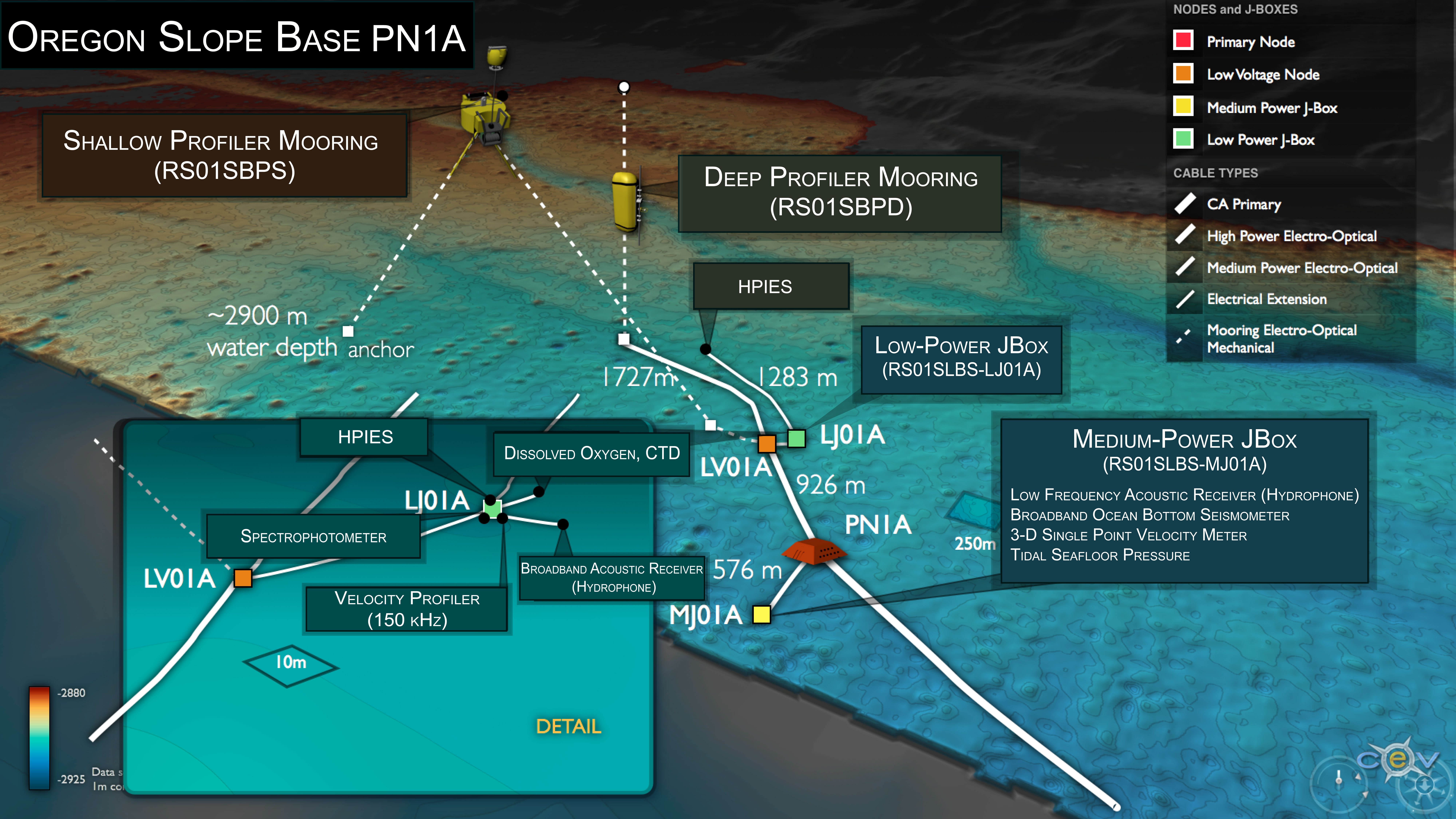Oregon Slope Base Primary Node (PN01A)
The Oregon Slope Base Primary Node (PN01A) is located adjacent to the continental slope off the coast of Oregon at a water depth of approximately 2,900 meters. This site provides power and bandwidth to junction boxes hosting seafloor geophysical sensors for detection of seismic events associated with earthquakes along the Cascadia Subduction Zone and within the accretionary prism. It also provides power and bandwidth to Shallow Profiler and Deep Profiler moorings with a complementary set of seafloor sensors. The coastal region of the Pacific Northwest is a classic wind-driven upwelling system where nutrient-rich deep waters rise to replace warmer surface waters. The result is a large increase in marine productivity that ranges from phytoplankton to fish to marine mammals. Near bottom fauna are periodically negatively impacted by the flow of deep waters with very low oxygen concentrations (hypoxia events), and upwelling of corrosive, acidified waters onto the continental shelf.
As with other Primary Nodes, PN01A rests on the seafloor and is connected to the land-based shore station in Pacific City, Oregon via fiber-optic cables. Primary Nodes convert high power (8 kW) from the shore station to a lower power (375 v) and distribute that power and communication to junction boxes within the Cabled Array through their science ports. Primary Nodes also receive data and communications from the junction boxes, which they transmit back to shore.
This particular Primary Node, PN1A, provides power and bandwidth to all Slope Base Cabled infrastructure, including:

